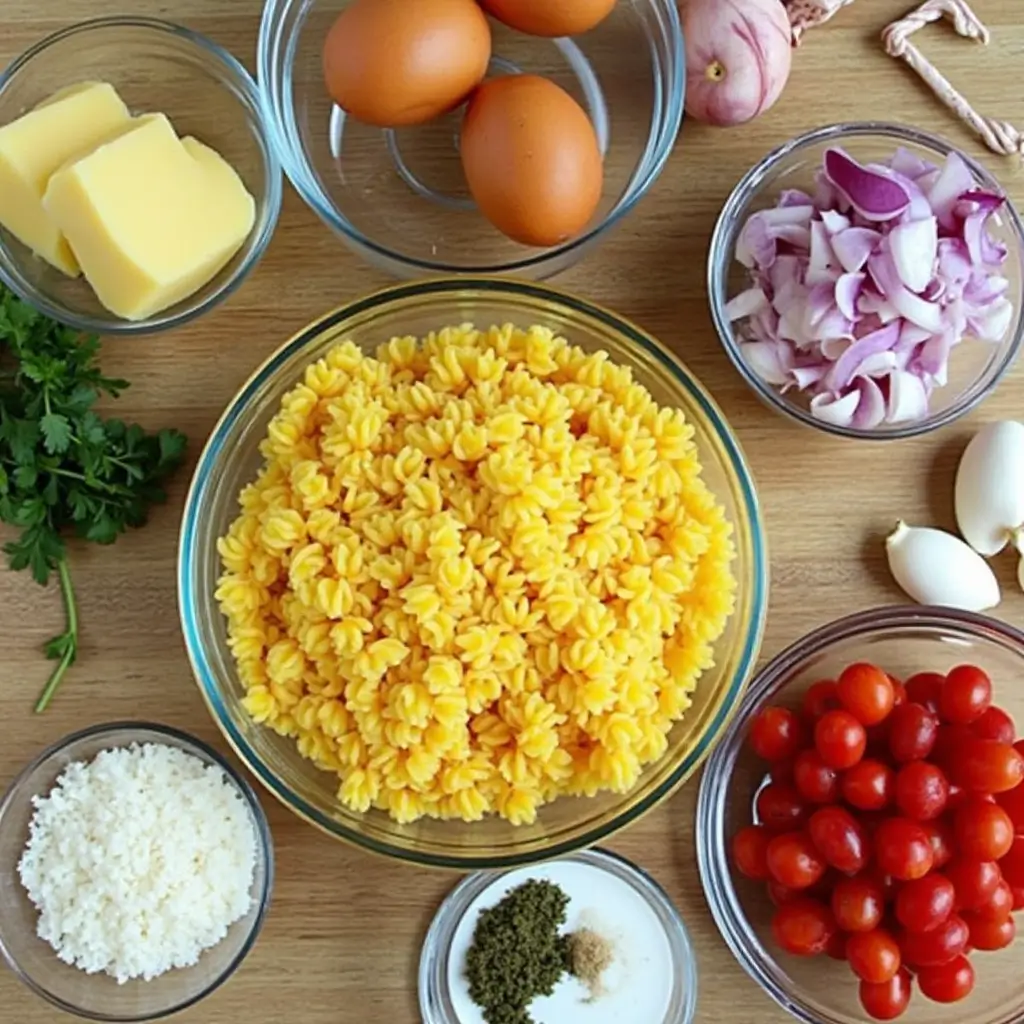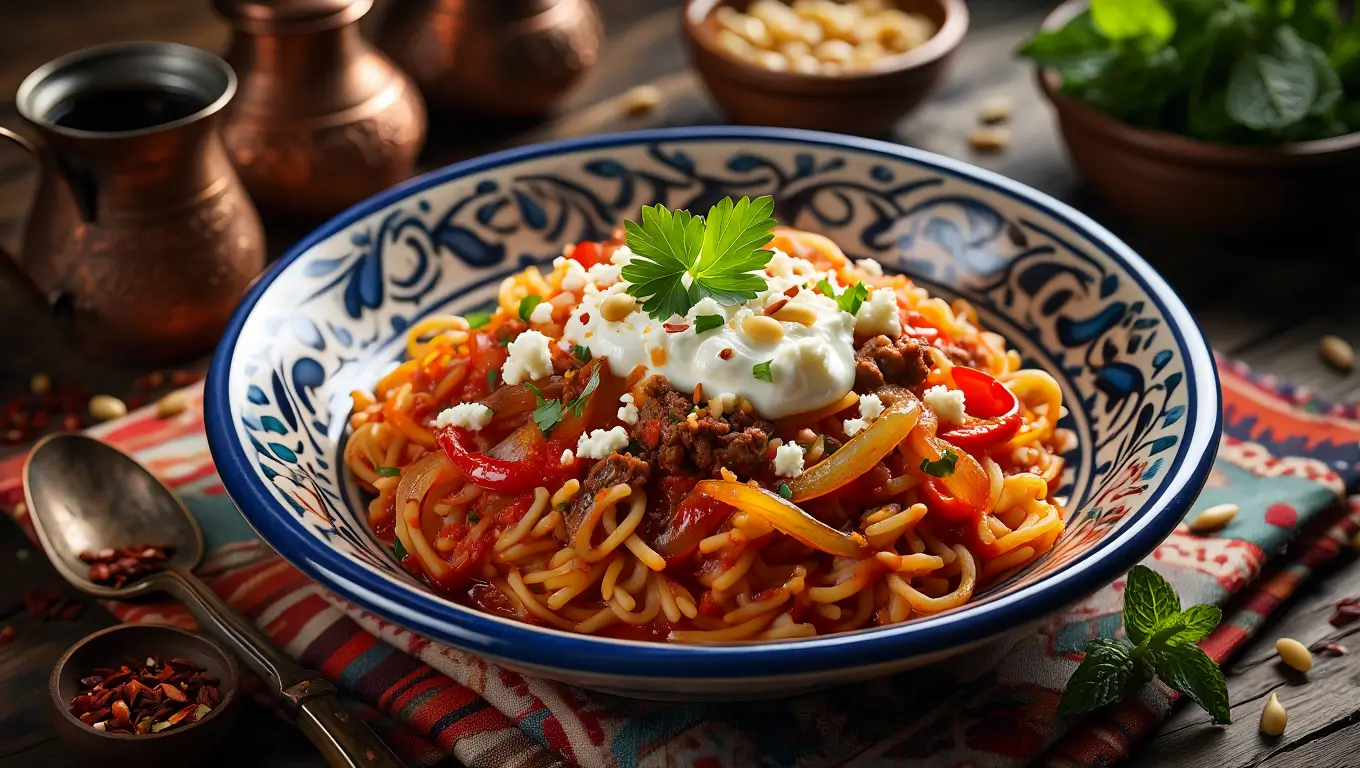Turkish Pasta Recipe
Imagine a dish that combines the comfort of pasta with the exotic flavors of Turkey. Turkish pasta, or “Makarna” as it’s known locally, is a delightful fusion of Mediterranean and Middle Eastern cuisines. It’s not just a meal; it’s an experience that will transport your taste buds to the bustling streets of Istanbul. So, are you ready to dive into the world of Turkish pasta and discover what makes it so unique? Let’s get started!
What Makes This Recipe Special?
Turkish pasta is more than just a simple pasta dish. It’s a blend of rich, aromatic spices, fresh vegetables, and hearty proteins, all tossed together with perfectly cooked pasta. What sets it apart is the use of traditional Turkish ingredients like sumac, pomegranate molasses, and a variety of nuts and seeds.
Time Requirement: Preparing Turkish pasta takes about 45 minutes to an hour, depending on your cooking skills and the complexity of the recipe you choose.
Difficulty Level: This recipe is moderately easy. If you can boil pasta and sauté vegetables, you’re already halfway there!
Essential Ingredients: The Heart of Turkish Pasta
- Pasta (1 pound or 450 grams): The base of our dish. You can use any type of pasta, but traditional Turkish pasta like “erişte” or “tel şehriye” adds an authentic touch.
- Vegetables:
- Bell Peppers (2 medium): Add a burst of freshness and color to the dish.
- Tomatoes (2 medium): Provide a juicy, tangy flavor.
- Onions (1 medium): Add depth of flavor and a slight sweetness.
- Garlic (3-4 cloves): Enhances the overall flavor with its pungent, aromatic notes.
- Proteins:
- Ground Beef or Lamb (1 pound or 450 grams): Adds a hearty, savory flavor.
- Chicken (1 pound or 450 grams): Provides a leaner, versatile option.
- Chickpeas (1 can or 15 ounces or 425 grams): A vegetarian option that adds protein and texture.
- Spices:
- Sumac (1 teaspoon): Adds a tangy, lemony flavor.
- Paprika (1 teaspoon): Provides a mild, slightly sweet flavor and color.
- Cumin (1 teaspoon): Enhances the flavor with a warm, earthy note.
- Red Pepper Flakes (1/2 teaspoon): Adds a touch of heat and depth.
- Herbs:
- Fresh Parsley (1/4 cup or 15 grams): Used to garnish the dish and add freshness.
- Dill (1/4 cup or 15 grams): Provides a light, slightly tangy flavor.
- Mint (1/4 cup or 15 grams): Adds a refreshing, cool flavor.
- Nuts and Seeds:
- Pine Nuts (1/4 cup or 30 grams): Add a lovely crunch and nutty flavor.
- Almonds (1/4 cup or 30 grams): Provide a crunchy, nutty texture.
- Sesame Seeds (1 tablespoon or 10 grams): Add a nutty flavor and slight crunch.
- Pomegranate Molasses (2 tablespoons or 30 ml): This adds a tangy, sweet, and slightly tart flavor that’s unique to Turkish cuisine.

Substitutions and Variations:
- If you can’t find pomegranate molasses, you can substitute it with a mix of lemon juice and honey.
- For a vegetarian version, swap the meat for chickpeas or lentils.
- Feel free to experiment with different types of pasta. Even spaghetti or penne can work well!
Step-by-Step Instructions: Let’s Cook!
1. Prepare Your Ingredients:
- Start by chopping your vegetables. You’ll need about 1 onion, 2 cloves of garlic, 1 bell pepper, and 2 tomatoes.
- If you’re using meat, make sure it’s ground or finely chopped.
2. Cook the Pasta:
- Boil your pasta according to the package instructions until it’s al dente. Remember to salt your water generously!
3. Sauté the Vegetables:
- In a large pan, heat some olive oil and sauté your onions and garlic until they’re soft and fragrant.
- Add your bell peppers and cook until they’re slightly tender.
4. Add the Protein:
- If you’re using meat, add it to the pan and cook until it’s browned. If you’re using chickpeas, add them now and cook until they’re heated through.
5. Spice It Up:
- Sprinkle in your sumac, paprika, cumin, and red pepper flakes. Stir everything together so the spices coat the vegetables and protein evenly.
6. Combine with Pasta:
- Once your pasta is cooked and drained, add it to the pan with the vegetables and protein. Toss everything together.
7. Finish with Herbs and Nuts:
- Stir in your fresh herbs and nuts or seeds. Drizzle some pomegranate molasses over the top for that authentic Turkish flavor.
Assembly: Building Your Turkish Pasta Masterpiece
- Presentation Tips:
- Serve your Turkish pasta on a large platter, family-style.
- Garnish with extra herbs, a sprinkle of sumac, and a drizzle of pomegranate molasses.
- For a touch of elegance, sprinkle some pomegranate seeds on top.
Storage and Make-Ahead Tips
- Storing Leftovers: Turkish pasta can be stored in an airtight container in the fridge for up to 3 days.
- Reheating: To reheat, simply pop it in the microwave or warm it gently on the stove with a splash of water to keep it from drying out.
- Make-Ahead: You can prepare the vegetable and protein mixture ahead of time and store it in the fridge. When you’re ready to eat, just cook the pasta and combine everything.
Recipe Variations: Get Creative!
- Vegan Version: Use lentils or chickpeas instead of meat and omit any dairy.
- Spicy Twist: Add a pinch of cayenne pepper or some chopped fresh chilies for a kick.
- Creamy Option: Stir in some Greek yogurt or a splash of cream for a richer sauce.
Common Mistakes to Avoid
- Overcooking the Pasta: Make sure to cook the pasta al dente to avoid a mushy texture.
- Skipping the Spices: Don’t skimp on the spices; they’re what give this dish its unique flavor.
- Not Balancing Flavors: Taste as you go and adjust the seasoning to balance the flavors.
Nutritional Information
- Calories: Approximately 500-600 calories per serving.
- Protein: Around 25-30 grams per serving, depending on the protein used.
- Carbohydrates: About 60-70 grams per serving.
- Fat: Around 15-20 grams per serving.


Conclusion: Enjoy Your Culinary Adventure!
Turkish pasta is a versatile and delicious dish that’s sure to become a family favorite. Don’t be afraid to experiment with different ingredients and spices to make it your own. The beauty of this recipe lies in its flexibility and the unique blend of flavors it offers. So, grab your apron and get cooking! Your taste buds will thank you.
FAQs: Your Questions Answered
Q: Is Turkish pasta healthy?
A: Yes! Turkish pasta is packed with vegetables, lean proteins, and healthy fats from the nuts and olive oil. Plus, the spices used have numerous health benefits.
Q: Can I make Turkish pasta ahead of time?
A: Absolutely! You can prepare the vegetable and protein mixture ahead of time and store it in the fridge. When you’re ready to eat, just cook the pasta and combine everything.
Q: What can I serve with Turkish pasta?
A: Turkish pasta pairs well with a simple green salad, some crusty bread, or even a side of hummus.
Q: How spicy is Turkish pasta?
A: The spiciness can vary depending on your preference. You can adjust the amount of red pepper flakes or add some chopped fresh chilies for more heat.
Q: Can I freeze Turkish pasta?
A: While you can freeze the vegetable and protein mixture, it’s best to cook the pasta fresh. Frozen pasta can become mushy when reheated.
Enjoy your culinary adventure with this Turkish pasta recipe!
Have you given our recipe a try ?
There are no reviews yet. Be the first one to write one.

